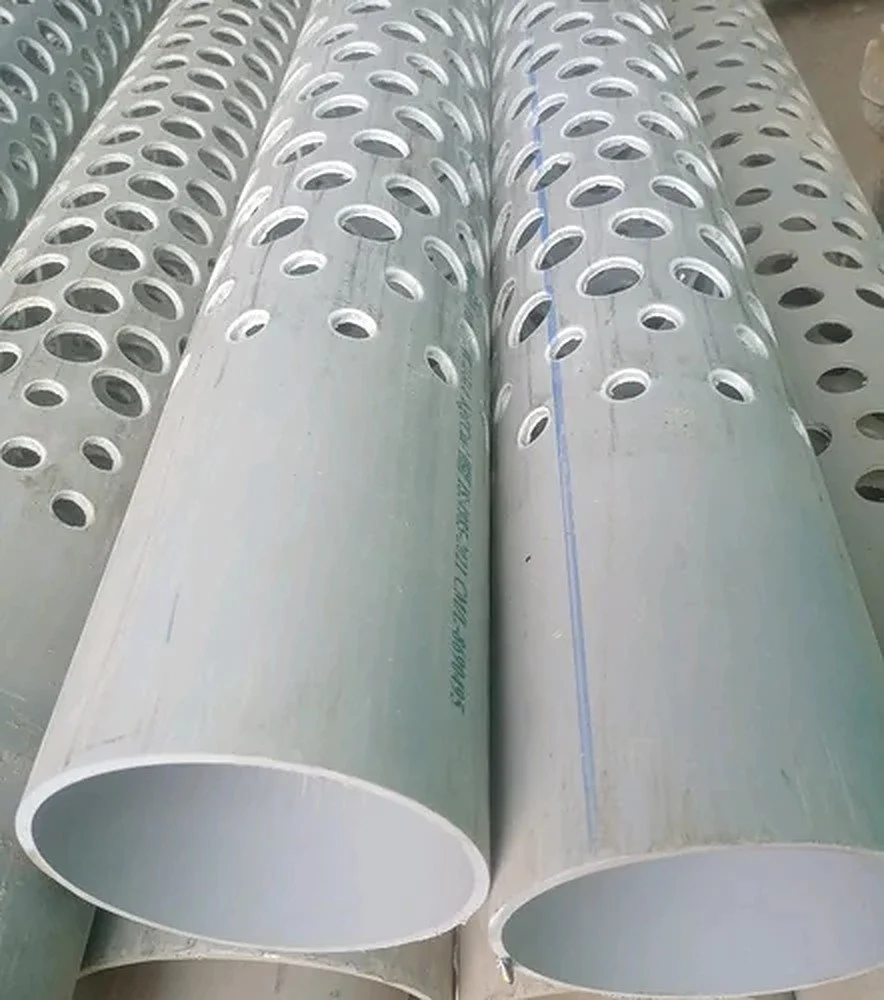Perforated pipes are essential components in modern drainage and irrigation systems, commonly installed underground to prevent flooding and manage water flow. These pipes, equipped with small holes or slots, allow water to enter or exit effortlessly, ensuring efficient drainage and protecting surrounding areas from water accumulation and damage. In this article, we’ll explore the characteristics, working mechanisms, and key applications of perforated pipes in various environments.

What Are Perforated Pipes?
Perforated pipes are designed to provide an efficient solution for managing water flow by allowing it to pass through small openings on the pipe’s surface. This unique design helps redirect water from areas prone to flooding or excessive moisture, making these pipes invaluable in maintaining dry, stable ground around structures and outdoor spaces. By controlling water levels, perforated pipes play a vital role in preventing the complications associated with poor drainage, such as foundation erosion, plant damage, and landscape flooding.
Features of Perforated Pipes Used in Construction
Perforated pipes are specifically crafted to withstand the challenges of long-term underground use. They offer flexibility, durability, and adaptability in various environments, making them a reliable choice for both residential and commercial applications.
- Durability and Flexibility: Perforated pipes are designed for longevity, as they’re often installed in areas that need continuous drainage support. Most pipes are flexible, allowing them to adapt to different landscapes and conditions.
- Dual Functionality: These pipes have two core functions – collecting water from wet ground and conveying it away from the area to keep the ground dry and prevent damage to nearby structures.
- Material Options: Perforated pipes come in various materials, including PVC, cement, clay, and iron. Among these, PVC is widely favored due to its lightweight nature, flexibility, and corrosion resistance, making it particularly suitable for underground installation.
How Perforated Pipes Work to Mitigate Flooding
The effectiveness of perforated pipes in water drainage depends on the size and orientation of their perforations. The holes can be oriented upward or downward, depending on the drainage requirements of the site.
- Hole Placement and Orientation:
- Upward-facing Perforations: This orientation helps prevent debris and silt from entering the pipe while collecting water, reducing blockages and maintenance needs.
- Downward-facing Perforations: Pipes with downward-facing perforations facilitate faster water collection and distribution. This orientation is often used in cases where rapid drainage is needed, as it allows water to flow into the pipe more directly.
- Customization Based on Application: Each drainage project may require specific perforation designs and pipe orientations. By choosing the appropriate type, contractors can optimize drainage effectiveness based on the particular needs of the site.
Key Applications of Perforated Drain Pipes
Perforated pipes serve diverse roles in managing water flow across various types of sites, from homes to public spaces to agricultural fields.
1. Domestic Use
In residential areas, perforated pipes are frequently installed to protect yards and basements from water damage.
- Yard Drainage: During heavy rainfall, yards are prone to flooding. Perforated pipes are installed around the perimeter to prevent water from pooling, protecting lawns and landscaping.
- Basement Waterproofing: Perforated pipes can be installed around the foundation of homes to create a buffer against water seepage, safeguarding basements from leaks and potential water damage.
2. Public Spaces
Many grassy areas, such as playgrounds and parks, have been developed in regions where flooding is a concern. Perforated pipes offer a solution to help drain water from these public spaces efficiently.
- Playground Drainage: By installing large underground perforated pipes beneath playgrounds, water is effectively filtered away, maintaining the area’s usability even after rainfall.
3. Irrigation
In agricultural settings, perforated pipes help regulate soil moisture by directing excess water to plant roots without oversaturating the fields.
- Soil Drainage for Crops: Perforated pipes are installed to manage excess soil water, reducing the risk of crop damage due to waterlogging. By channeling water to plant roots, these pipes support healthier crops and improve irrigation efficiency.
Importance of Professional Installation
Although perforated pipes are a highly effective drainage solution, their installation should be handled by professionals. Proper planning and installation are crucial for ensuring that the pipes are placed in optimal locations and oriented in ways that meet the drainage needs of each site. Experienced installers also ensure that the system is resilient and long-lasting, minimizing maintenance and maximizing effectiveness.
Conclusion
Perforated pipes are invaluable tools in managing water flow, protecting structures and landscapes from the damage associated with excess water. With various applications across residential, public, and agricultural settings, they offer a versatile solution to drainage issues. By opting for professional installation and selecting the appropriate pipe design, property owners can leverage the benefits of perforated pipes to maintain dry, stable, and resilient environments, even in the face of heavy rainfall and challenging landscapes.
